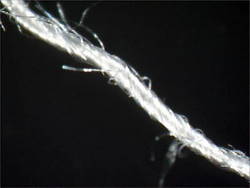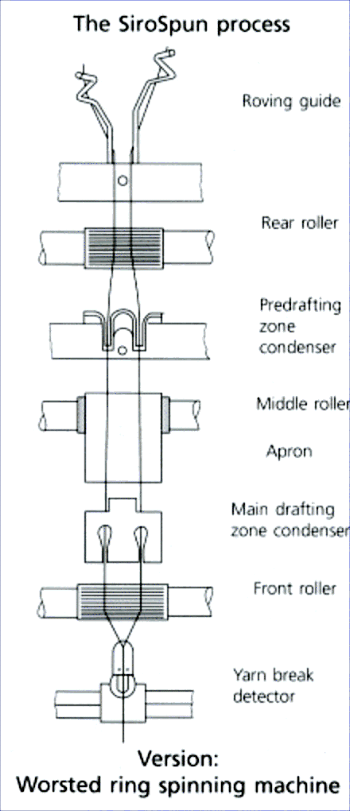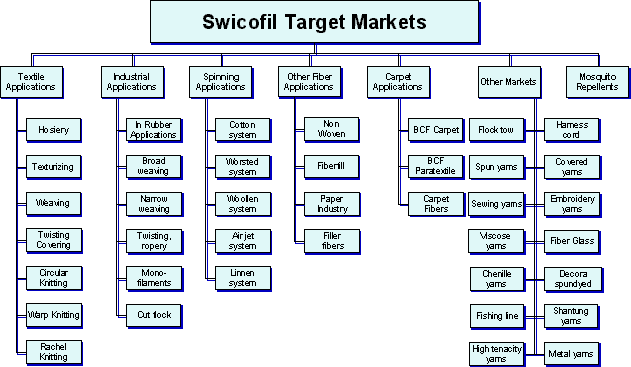
| |||||||||||||||||||||||
 |
Siro spinning technology
SiroSPUN™ - Spinning Process
Traditionally, two-fold yarns have been used for weaving because they are stronger, and the twisting operation binds the surface fibers into the yarn structure so that it is smoother and more resistant to abrasion during weaving. The SiroSPUN™ process adapted some of the self-twist discoveries of CSIRO to the ring spinning technology of the worsted system, and combined spinning and doubling in the one operation. The technology maintains two separate strands during the spinning process, and this allows a number of fibre-binding mechanisms to operate before the strands are twisted about each other. An important aspect of the SiroSPUN™ system is a simple device to break out the remaining strand if one of the strands should be accidentally broken. SiroSPUN™ is especially suited to the production of lightweight trans-seasonal fabrics, and a significant proportion of the world’s worsted spinning installations have been converted to this cost-saving and innovative CSIRO technology. How SiroSPUN™ works Spinners have long demanded spinning and twisting in a single operation. The SiroSPUN™ process offers the solution:
Two rovings are led separately through the drafting system in parallel and are only combined once they have passed the nip point of the front top and front bottom roller. A twofold-like weave able yarn, Siro yarn, is the result.
The process With the SiroSPUN™ process, a special spin-twisted yarn can be produced directly on the ring-spinning machine. In this process, two rovings are led in parallel through the drafting system, separated by two specially developed condensers, and drafted separately. The twist is introduced as for a normal single yarn by means of ring and traveller. The roving strands, which are drafted parallel, are combined after passing the front rollers at the exit from the drafting system, with some twist being produced in the individual strands right up to the nip point. Once past the front roller of the drafting system, the two strands are combined producing a twofold-like yarn. The yarn has uni-directional twist like a singles yarn but the fibers are bound sufficiently for the yarn to survive weaving. Control
SiroSPUN™ process Spinning
and twisting in a single operation As far as the material is concerned, all the fibers with sufficient staple length normally used in long or short staple spinning can be processed. However, the twist used is similar to the normal two-fold twist rather than the normal singles twist.
Economic
efficiency of SiroSPUN™
Benefits of
SiroSPUN™ The main advantage of the SiroSPUN™ process is a reduction in spinning costs for pure fine wool weaving yarn. On average, SiroSPUN™ technology lowers the processing costs of spinning by 56 per cent. Weaving yarns are normally two-fold – that is, made up of two yarns twisted together. Ordinarily the strands must be first spun and then ‘two-folded’. SiroSPUN™ reduces cost by combining spinning and two-folding, allowing a twofold-like yarn to be produced in one step from wool top.
Advantageous
to fabric producers . . . . . .
garment makers, and wool growers
| ||||||||||||||||||||||
![]()
| Be notified of page updates |
wwwswicofilcom2015




